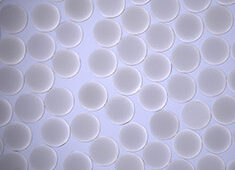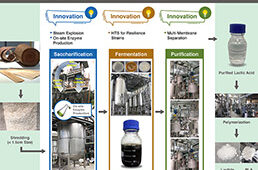Mimicking
the way mother of pearl is created in nature, scientists have for the
first time synthesized the strong, iridescent coating found on the
inside of some molluscs. The research was published today in the journal
Nature Communications.
Nacre,
also called mother of pearl, is the iridescent coating that is found on
the inside of some molluscs and on the outer coating of pearls. By
recreating the biological steps that form nacre in molluscs, the
scientists were able to manufacture a material which has a similar
structure, mechanical behavior, and optical appearance of that found in
nature.
In
order to create the artificial nacre, the scientists followed three
steps. First, they had to take preventative measure to ensure the
calcium carbonate, which is the primary component of nacre, does not
crystallize when precipitating from the solution. This is done by using a
mixture of ions and organic components in the solution that mimics how
molluscs control this. The precipitate can then be adsorbed to surfaces,
forming layers of well-defined thickness.
Next,
the precipitate layer is covered by an organic layer that has 10-nm
wide pores, which is done in a synthetic procedure invented by co-author
Alex Finnemore. Finally, crystallization is induced, and all steps are
repeated to create a stack of alternating crystalline and organic
layers.
Professor
Ulli Steiner, of the Department of Physics’ Cavendish Laboratory at the
University of Cambridge, said: “Crystals have a characteristic shape
that reflects their atomic structure, and it is very difficult to modify
this shape. Nature is, however, able to do this, and through our
research we were able to gain insight into how it grows these materials.
Essentially, we have created a new recipe for mother of pearl using
nature’s cookbook.”
Alex
Finnemore, also of the Department of Physics’ Cavendish Laboratory,
said: “While many composite engineering materials outperform nacre, its
synthesis entirely at ambient temperatures in an aqueous environment, as
well as its cheap ingredients, may make it interesting for coating
applications. Once optimised, the process is simple and can easily be
automated.”
Biomimetic Layer-by-Layer Assembly of Artificial Nacre
Source: University of Cambridge




